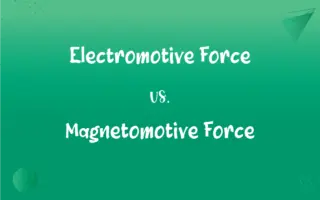Crystalline vs. Amorphous: What's the Difference?
Edited by Harlon Moss || By Janet White || Published on February 29, 2024
Crystalline materials have a well-ordered, repeating atomic structure, while amorphous materials lack this regularity.

Key Differences
Crystalline substances are characterized by a regular, repeating atomic arrangement, contributing to their distinct shapes and angles. Amorphous materials, in contrast, have a random atomic structure, lacking this uniformity.
In crystalline structures, the orderly atomic arrangement influences their physical properties like melting points, which are sharp and well-defined. Amorphous materials have a range of melting points due to their irregular structure.
The optical properties of crystalline materials often include transparency and anisotropy, due to their ordered structure. Amorphous substances usually exhibit isotropic properties and are often opaque or translucent.
Crystalline materials often exhibit well-defined cleavage properties, a result of their atomic planes. Amorphous materials, lacking such planes, do not cleave in predictable ways.
Examples of crystalline substances include diamonds and quartz, known for their geometric shapes. Common amorphous materials include glass and plastics, which do not have a specific geometric form.
ADVERTISEMENT
Comparison Chart
Atomic Arrangement
Ordered and repeating
Random and disordered
Melting Point
Sharp and distinct
Broad range, gradual
Optical Properties
Often transparent, anisotropic
Usually opaque, isotropic
Cleavage
Defined cleavage due to planes
Irregular or no cleavage
Examples
Diamonds, quartz
Glass, plastics
ADVERTISEMENT
Crystalline and Amorphous Definitions
Crystalline
Crystalline materials exhibit sharp melting points.
Pure crystalline ice melts precisely at 0°C.
Amorphous
Amorphous substances do not have a sharp melting point.
Amorphous plastics soften over a range of temperatures.
Crystalline
Crystalline substances have clear, defined geometric shapes.
Salt crystals form cubic shapes due to their crystalline nature.
Amorphous
Amorphous describes materials without a defined crystal structure.
Glass is amorphous, lacking a regular atomic pattern.
Crystalline
Crystalline refers to a material with a structured atomic lattice.
The crystalline structure of diamonds makes them extremely hard.
Amorphous
Amorphous materials generally show isotropic properties.
Amorphous rubber exhibits uniform properties in all directions.
Crystalline
Crystalline structures often show anisotropic properties.
The crystalline form of quartz shows different colors from different angles.
Amorphous
Amorphous solids lack clear geometric shapes.
The amorphous nature of candle wax is evident in its irregular shape when melted.
Crystalline
Crystalline substances can have specific cleavage planes.
Mica splits easily along its crystalline planes.
Amorphous
Amorphous substances do not have cleavage planes.
Breaking a piece of glass shows its amorphous character, as it fractures irregularly.
Crystalline
Being, relating to, or composed of crystal or crystals.
Amorphous
Lacking physical form or shape.
Crystalline
Resembling crystal, as in transparency or distinctness of structure or outline.
Amorphous
Lacking organization; formless
"He helped me turn a deeply felt but amorphous idea into a coherent narrative" (James S. Hirsch).
FAQs
How does light interact with crystalline materials?
Light can be diffracted or exhibit birefringence when interacting with crystalline structures.
Are all glasses amorphous?
Most common glasses are amorphous, but there are crystalline glasses too.
What is an amorphous material?
An amorphous material lacks a defined crystal structure and has a random atomic arrangement.
Can a substance be partially crystalline?
Yes, some materials can have both crystalline and amorphous regions.
Is quartz crystalline or amorphous?
Quartz is a crystalline substance.
What defines a crystalline material?
A crystalline material is defined by its regular, repeating atomic structure.
Are crystalline materials always hard?
While many crystalline materials are hard, this is not always the case.
Are ceramics crystalline?
Most ceramics are crystalline, although some can have amorphous phases.
How does the melting point of amorphous materials compare to crystalline?
Amorphous materials have a broad melting range, unlike the sharp melting point of crystalline materials.
Are metals crystalline?
Most metals are crystalline in their solid state.
Is plastic crystalline or amorphous?
Plastics can be either crystalline or amorphous, depending on their structure.
Do amorphous materials have a grain structure?
No, amorphous materials lack a grain structure due to their random atomic arrangement.
Is diamond crystalline or amorphous?
Diamond is a crystalline form of carbon.
Can amorphous materials be made crystalline?
Yes, through processes like heat treatment, some amorphous materials can be made crystalline.
Do crystalline materials have higher strength than amorphous ones?
Generally, crystalline materials are stronger due to their ordered structure.
How are crystalline substances formed?
Crystalline substances form through processes like cooling from a melt or precipitation from a solution.
How does temperature affect amorphous materials?
Temperature changes can cause amorphous materials to transition towards a more crystalline state.
Can crystalline and amorphous materials be distinguished visually?
Sometimes, especially if the crystalline material forms large, visible crystals.
Is ice crystalline or amorphous?
Normal ice is crystalline, with a regular atomic arrangement.
How do crystalline materials respond to stress?
Crystalline materials can deform along specific planes or fracture along cleavage lines.
About Author
Written by
Janet WhiteJanet White has been an esteemed writer and blogger for Difference Wiki. Holding a Master's degree in Science and Medical Journalism from the prestigious Boston University, she has consistently demonstrated her expertise and passion for her field. When she's not immersed in her work, Janet relishes her time exercising, delving into a good book, and cherishing moments with friends and family.
Edited by
Harlon MossHarlon is a seasoned quality moderator and accomplished content writer for Difference Wiki. An alumnus of the prestigious University of California, he earned his degree in Computer Science. Leveraging his academic background, Harlon brings a meticulous and informed perspective to his work, ensuring content accuracy and excellence.





































































